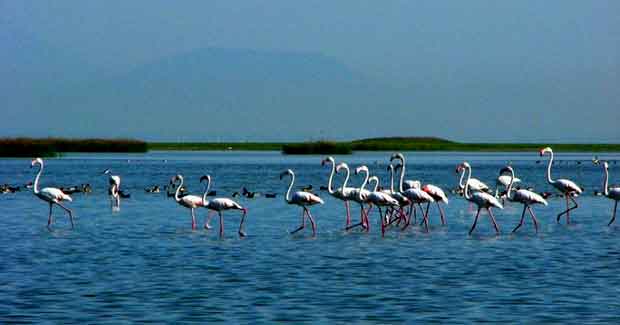Puri: The twin ambitious projects of the Centre – a water aerodrome and a five-km bridge over Chilika Lake – have invited criticisms from several quarters as it could adversely impact the eco-system of the largest brackish water lake of Asia.
Sprawled over 1,165 sq km in Khurda, Puri and Ganjam, Chilika, a Ramsar site, is a confluence of 52 rivers as well.
Extending over 16 sq km in the heart of Chilika, Nalabana Island becomes a temporary habitat for lakhs of migratory and residential birds between October and March. “According to the Bird Census of 2018, Nalabana bird sanctuary recorded 3,20,826 birds out of 8,93,390 winged guests thronging Chilika that year. Besides, according to the Dolphin Census of 2018, as many as 155 endangered Irrawaddy dolphins were spotted in the lake, which is the single largest habitat of the species in the world,” said an environmentalist. As many as two lakh fishermen of 147 villages here depend upon the lagoon for their livelihood, he added.
At a time when motor boats and illegal artificial enclosures have already taken a heavy toll on migratory birds and endangered Irrawaddy dolphins, the Central government’s projects will definitely worsen it further, it is alleged.
The water aerodrome would boost the tourism on one hand and endanger the bird population on the other. “Aircraft flying over the lake at a lower height will give rise to bird-hit cases. This would pose a threat to the bird population at Chilika,” the environmentalist warned.
The bridge which would connect Janhikuda and Satpada, would help numerous people including residents of Mahisa and Brahmapura villagers. However, in the long run, the sound of the vehicles would disturb the Irrawaddy dolphins forcing them to migrate elsewhere, the environmentalist added.
Meanwhile, additional chief executive officer of Chilika Development Authority, Sasmita Lenka, refused to give any official comment as they are yet to receive any official communication about the proposed water aerodrome and bridge. “However, when it comes to safety of the biodiversity, the projects would surely disturb the ecology,” Lenka said.
Former chief conservator of forest (Sanctuary), Bijay Ketan Patnaik said that the dual project would not only damage the ecosystem but also render the fishing community jobless. “The noise and air pollution will destroy the unique ecosystem of the site which would result in death of the fishes. Thus, the fishermen would have nothing to live with,” Patnaik said.
Orissa High Court senior lawyer Shankar Pani said Chilika should be seen as a sensitive biodiversity instead of a vacation site. “According to Zoological Survey of India’s survey in 1985-87, Chilika is home to at least 800 species of fauna. Hence, it should be kept out of human interference in an attempt to ensure survival of the fauna. The environmental impact assessment notification in 2006 mandates analysis of any developmental project’s impact on the environment before its execution,” Pani said.
Chilika Bachao Andolan convenor Sudarshan Das observed that the dual project would harm Chilika’s ecology. “The noise of landing airplanes in the lake will disturb the fauna at the Ramsar designated site,” Das said.
Advisor to Chilika Fishermen Union Muralidhar Behera said that the alluvial soil carried by the rivers usually goes into the sea. However, after construction of the bridge, the alluvial soil will be deposited in the lake. Subsequently, the lake will be losing its water carrying capacity. Hence, as many as two lakh fishermen of 147 villages here will be rendered jobless, Behera said.
